South Dakota Birding Hotspot
Dewey Gevik Nature Area / Wall Lake
Minnehaha County
| Click on points to view actual ground photos and birding information for those locations. Use the Google tools to switch between road maps, terrain, or satellite images. |
Directions:
The Dewey Gevik Nature Area and the adjacent Wall lake are in western Minnehaha County, west of Sioux Falls. From Sioux Falls, 12th street headed west out of town turns into Highway 42. It is also called "265th street" in rural areas. Drive west out of Sioux Falls, about 6 miles from the edge of town. You'll arrive at an intersection with a gas station on the southwestern corner, at county highway 151 (also known as 463rd avenue). Drive one mile south, and turn right (west).
On this road you'll pass the south side of Wall Lake. The beach area, and a small residential area are here. To get to Dewey Gevik, continue driving west for one mile. Turn right (north) and Dewey Gevik will be on your left after about 1/4 mile.
Geographic Coordinates: 43.531726° N, 96.970086° W (coordinate of entrance to Dewey Gevik Nature Area).
Description:
Wall Lake is a large natural lake west of Sioux Falls, covering a little over 200 acres. Given the proximity to Sioux Falls, it is a popular recreation area, and also is surrounded by many single-family homes. A small beach area on the south end of the lake is a very popular hangout in the summer, and the area can be relatively crowded (by South Dakota standards) on a weekend. The Lake is primarily open water, with a few scattered wetland (cattails) areas around the lake margins. The lake is over 30 feet deep at its deepest point, making it one of the deeper natural lakes in the area. There are scattered groves of trees around the margins of the lake, including a treed peninsula that juts out into the lake near the fishing dock.
Dewey Gevik Nature Area is adjacent to Wall Lake, just to the west. A small creek connects Dewey Gevik with Wall Lake, entering Dewey Gevik on its eastern edge. Dewey Gevik overall covers about 100 acres. The central park of the nature area is a shallow lake, surrounded by herbaceous wetland. Water levels fluctuate significantly at Dewey Gevik, depending upon seasonal rainfall and time of year. Expanses of open water are always found in parts of the nature area, but Dewey Gevik has large areas of marshland, shallow water, and sometimes mudflats that attract a variety of birds. A walking trail leads a hiker past not only the aquatic habitats, but into upland grassland habitats that can sometimes provide good birding.
Points of Note (Click on numbers on the map to see photos of the locations):
There are many scattered wetlands and ponds in western Minnehaha County. I'm not sure Dewey Gevik Nature Area necessarily holds any more birds than any other wetland complex in the area, but the primary advantage from a birder's standpoint is access. It's very close to Sioux Falls, has a parking lot right next to the road, and has walking trails that lead past all the good birding spots. Without a doubt though the biggest advantage for a birder is the permanent birding blind that was constructed. The blind sits on a small man-made peninsula on the southern edge of the water (Point 1 on the map). With water on all sides of the blind, it allows for excellent viewing opportunities for waterfowl and other aquatic birds. Upon first arriving at the blind, your movement into the blind will likely scare most waterfowl away from the blind itself, but your patience will be rewarded. After a few minutes in the blind, the birds will forget about the human intruder that interrupted them, and you can often get extremely close views of waterfowl that are otherwise extremely skittish and hard to approach in a hunting-happy South Dakota. I would guess that half of the very high-quality waterfowl photos I have ever taken have been from the blind at Dewey Gevik.
When I bird Dewey Gevik, I spend most of my time at the blind itself, or poking through the wetland vegetation. However, there are are also some nice hiking trails (Point 2). The trail itself doesn't get too close to the wetland habitat or water, so if you're after aquatic species, the trail isn't the best option. However, the ~1 mile of trails does go through some nice grassland habitat that can be good for grassland species. There are also a few shrubby areas and tree groves that can hold songbirds or other surprises.
At the adjacent Wall Lake, the first place I always look is the beach (Point 3), at least outside of the summer season. In summer, on a nice afternoon or weekend, the beach will be crowded. But during spring and fall migration, the beach is empty, and it is often very birdy. The Sioux Falls dump is only a couple of miles away, and during migration, hundreds or thousands of gulls are often streaming back and forth between the lake and the dump. In scanning the flocks of gulls, you never know what rarity might show up. The shallow water and sandy beach also can attract shorebirds in migration.
Finally, one other place I usually check out at Wall Lake is a little peninsula (Point 4) that sticks out into the lake near the boat dock. The peninsula is covered with trees and shrubs, and I've sometimes had truly wonderful luck seeing songbirds here, particularly during spring migration. One spring day was nothing short of a full-blown fall-out of migrating warblers, of many different species. The point also tends to give you better looks at waterfowl than you might find elsewhere on the lake. With deeper water adjacent to the point, it's a location where I've been able to watch foraging loons in migration, quite close to the shoreline.
Birds of Note:
The big attraction for the Dewey Gevik / Wall Lake area for me are the aquatic species. Wall Lake itself is the largest open, deep water lake in the Sioux Falls area, while Dewey Gevik's blind offers you great opportunities for close viewing of waterfowl and other aquatic species. Nearly any species of waterfowl that can be found in eastern South Dakota may be found here, including some that can be difficult to find elsewhere in the region. In addition to the variety of dabbling and diving ducks that can be found on both Dewey Gevik and Wall Lake, I've often seen Common Loons at Wall Lake in migration. American White Pelicans can often be found here in migration by the dozens or even hundreds. Wading birds stalk the shallows in both areas, with Dewey Gevik often holding Green Herons, Great Blue Herons, and Great Egrets. Hidden among the cattails you may find an American Bittern, and Dewey Gevik is the only South Dakota location where I've glimpsed a Least Bittern (one glimpse...a nemesis bird for me!).
With the city dump so close to Wall Lake, both the open water of the lake and the dump itself attract thousands of gulls in migration. Ring-billed Gulls dominate, with Franklin's Gulls often also found by the hundreds. However, it's also a great place to look for potential rarities. Sabine's Gull, Lesser Black-backed Gull, Glaucous Gull, Thayer's Gull, and other gull and tern species have also been seen here.
When I bird around Wall Lake and Dewey Gevik, I'm primarily looking for aquatic species, but the scattered trees and shrubs also can hold a variety of songbirds. The grassland trails at Dewey Gevik offer an opportunity to see the common grassland species of the area.
Other Birding Locations (sorted by distance):
- Western Minnehaha County (~5 miles)
- Outdoor Campus in Sioux Falls (~12 miles)
- Good Earth State Park (~22 miles)
- Big Sioux Recreation Area (~25 miles)
- Beaver Creek Nature Area (~30 miles)
- Madison Waterfowl Production Area (~40 miles)
- Newton Hills State Park (~45 miles)
- Dakota Nature Park, Brookings (~70 miles)
- Gavin's Point Dam (~75 miles)
- North Alabama Bend (~75 miles)
- Lake Thompson Area (~75 miles)
- Presho Area (~165 miles)
- Fort Pierre National Grasslands (~190 miles)
- Pierre / Oahe Dam Area (~215 miles)
- LaCreek National Wildlife Refuge (~280 miles)
Bird Photos from Dewey Gevik Nature Area and Wall Lake |
||
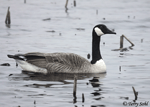 |
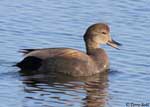 |
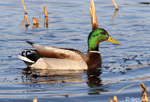 |
| Canada Goose | Gadwall | Mallard |
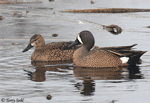 |
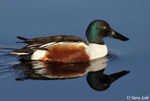 |
 |
| Blue-winged Teal | Northern Shoveler | Northern Pintail |
 |
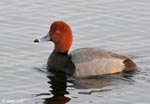 |
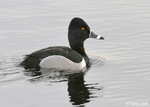 |
| Green-winged Teal | Redhead | Ring-necked Duck |
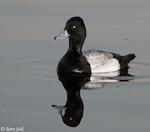 |
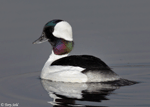 |
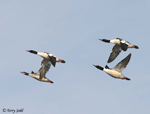 |
| Lesser Scaup | Bufflehead | Common Merganser |
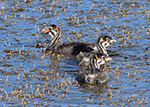 |
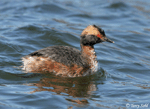 |
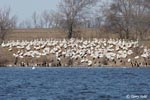 |
| Pied-billed Grebe | Horned Grebe | American White Pelican |
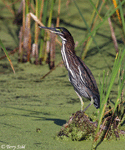 |
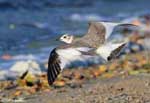 |
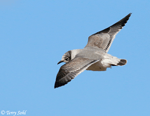 |
| Green Heron | Sabine's Gull | Franklin's Gull |
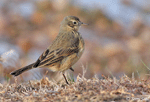 |
 |
|
| American Pipit | Yellow-headed Blackbird | |

